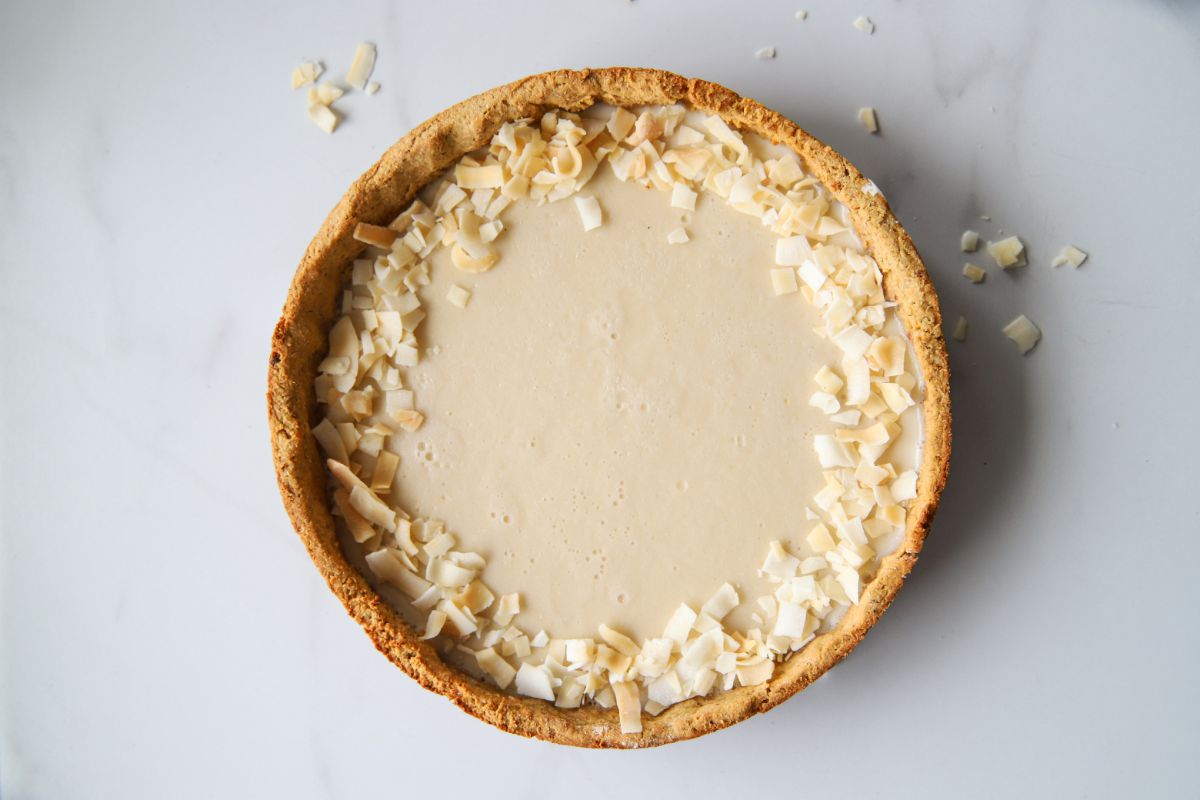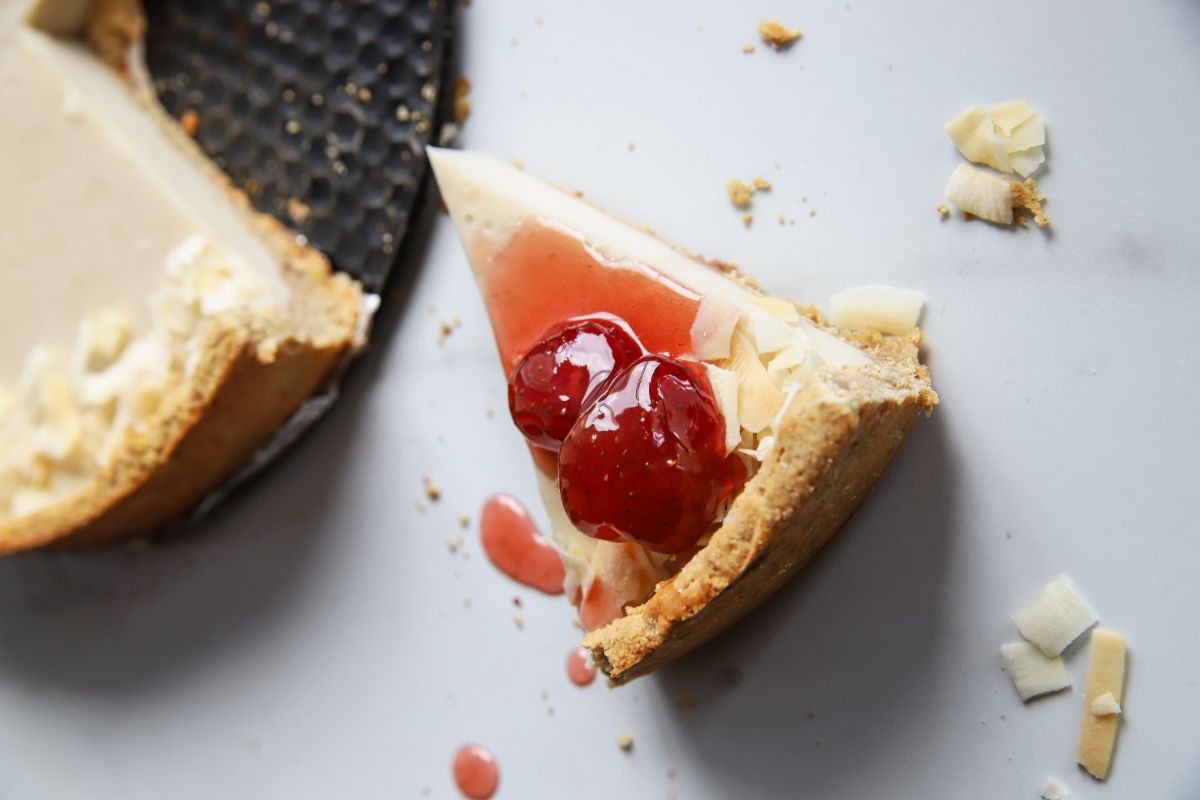Coconut custard pie is a delightful dessert that combines the creamy richness of custard with the tropical flavor of coconut. But what happens when you have leftovers or want to prepare the pie ahead of time? Can you freeze coconut custard pie without sacrificing its taste and texture?

In this article, we delve into the world of freezing coconut custard pie to explore how to do so in the most effective way possible.
Whether you’re a pie enthusiast or simply looking for ways to extend the shelf life of your favorite dessert, join us as we uncover the secrets to freezing coconut custard pie and ensure that each slice remains a delectable treat, even after spending time in the freezer!
What Is Coconut Custard Pie?
Coconut custard pie is a delicious and creamy dessert that combines the richness of custard with the tropical flavor of coconut. It typically consists of a flaky pie crust filled with a smooth and velvety custard mixture infused with coconut.
To make a coconut custard pie, a combination of eggs, sugar, milk or cream, and coconut flakes are whisked together to create a custard base.
This mixture is then poured into a pre-baked pie crust and baked until the custard is set and the top is lightly golden.
The pie is often garnished with toasted coconut flakes or whipped cream for an added touch of flavor and presentation. The result is a luscious pie with a creamy, custard-like texture and a delightful coconut taste.
The combination of the sweet custard filling and the tropical notes of coconut creates a harmonious and indulgent dessert that is loved by coconut enthusiasts and pie lovers alike.
Whether served warm or chilled, coconut custard pie is a delightful treat for any occasion. Its smooth and creamy consistency, combined with the delicate sweetness and coconut flavor, makes it a popular choice for dessert lovers looking for a taste of the tropics in a classic pie form.
Can Coconut Custard Pie Be Frozen?
Yes, coconut custard pie can be frozen, but it’s important to note that the texture and consistency may be slightly altered after thawing.
Freezing a custard-based pie like coconut custard pie can cause the custard to become slightly softer or develop a more pudding-like texture.
However, if you follow the right steps and take certain precautions, you can successfully freeze coconut custard pie and enjoy it at a later time.
How To Freeze A Coconut Custard Pie
Let’s take a look at the steps to take when it comes to freezing a coconut custard pie.
Cool The Pie
Allow the coconut custard pie to cool completely at room temperature before freezing. This helps to prevent excess moisture from forming and affecting the texture.
Wrap It Well
Wrap the pie tightly with plastic wrap, ensuring that it is completely sealed to prevent freezer burn and maintain its freshness.
Double Layer
For added protection, place the wrapped pie in a freezer-safe bag or wrap it with an additional layer of aluminum foil. This extra layer will help to maintain the quality of the pie during freezing.
Label And Date
It’s important to label the pie with the date of freezing to keep track of its freshness. Use a marker or label to indicate the contents and freezing date on the packaging.
Freeze Promptly
Place the wrapped pie in the freezer as soon as possible to maintain its quality. Ensure that the freezer temperature is set to the appropriate level for freezing.
Following these steps will help to ensure that your coconut custard pie maintains its quality and flavor when you’re ready to thaw and serve it.
How To Thaw A Coconut Custard Pie After Freezing It

It’s also important to know how to thaw your coconut custard pie properly to ensure the best possible taste and texture, so let’s take a look at how to do so.
Transfer To The Refrigerator
Remove the wrapped coconut custard pie from the freezer and place it in the refrigerator. Allow it to thaw slowly in the refrigerator, which helps maintain the texture and flavor of the pie.
Depending on the size of the pie and the temperature of your refrigerator, thawing may take anywhere from a few hours to overnight.
Keep It Covered
It’s essential to keep the pie covered while thawing to prevent any condensation from forming on the surface.
You can leave the plastic wrap or additional layers of foil on the pie during the thawing process.
Reheat If Desired
If you prefer to enjoy the pie warm, you can reheat it after thawing. Preheat your oven to a low temperature, around 250°F (120°C).
Remove any plastic wrap or foil from the pie, and place it on a baking sheet. Heat the pie in the oven for about 15-20 minutes, or until it reaches your desired temperature. Keep an eye on it to prevent over-baking or browning.
Serve And Enjoy!
Once the pie is fully thawed and, if desired, reheated, it is ready to be served. Slice it into portions and serve chilled or warm, depending on your preference.
Remember, it’s important to consume the pie within a few days after thawing to ensure optimal taste and quality. If you have any leftovers, you can store them in the refrigerator for a short period.
Final Thoughts
Freezing a coconut custard pie is indeed possible, allowing you to enjoy this delectable dessert at a later time.
While the texture of the custard may be slightly altered after thawing, taking the proper steps during freezing and thawing can help maintain the overall quality of the pie.
By cooling the pie thoroughly, wrapping it tightly to prevent freezer burn, and adding an extra layer of protection, you can successfully freeze coconut custard pie. Thawing the pie in the refrigerator slowly and keeping it covered also helps preserve its texture and flavor.
Whether you choose to enjoy the thawed pie chilled or gently reheat it for a warm treat, freezing allows you to savor the taste of coconut custard pie on your own schedule. Just remember to consume the pie within a few days after thawing for the best experience.
So, the next time you have leftover coconut custard pie or want to prepare it in advance, feel confident in freezing it and knowing that you can still indulge in this delightful dessert whenever the craving strikes!
- How To Reheat A Cheesesteak - November 5, 2023
- What Are Three Must Have Kitchen Knives? - September 22, 2023
- How To Protect Edges Of Pie Crust - June 15, 2023








